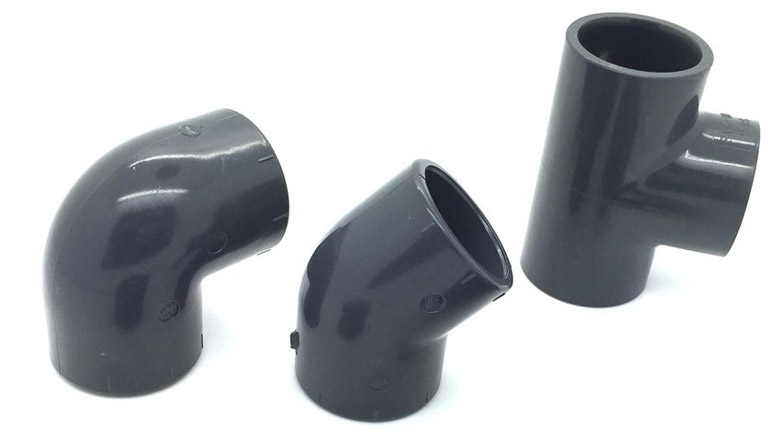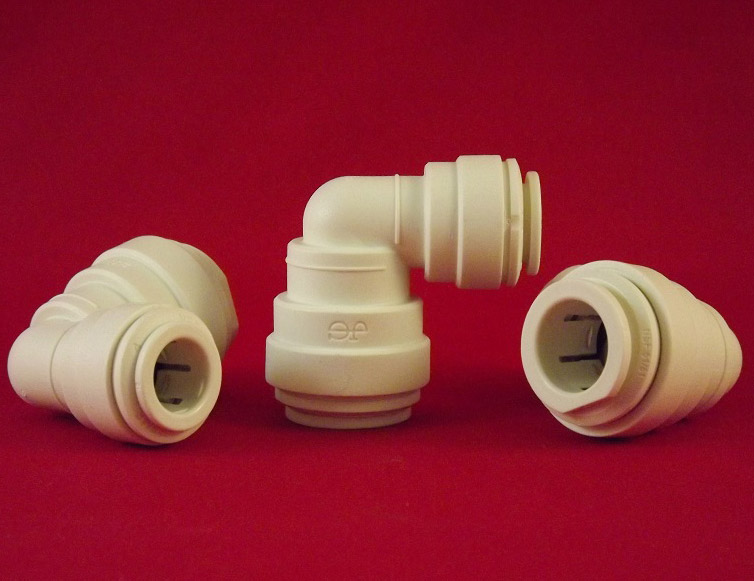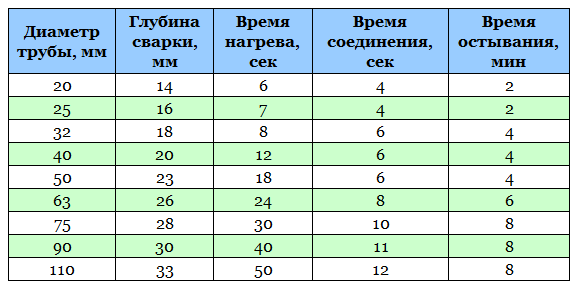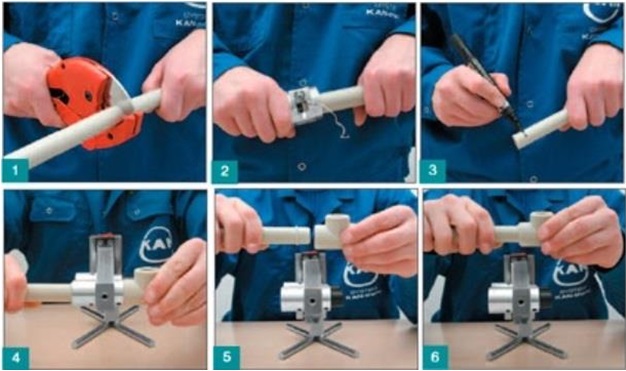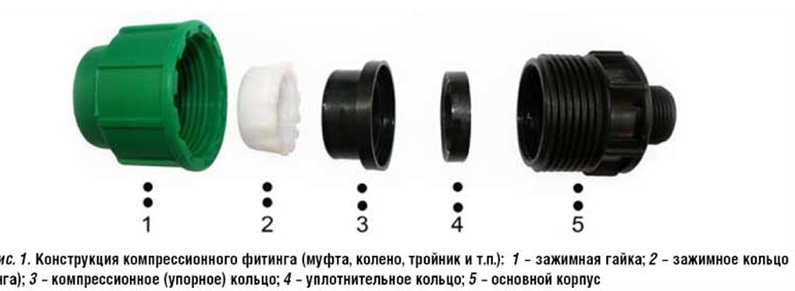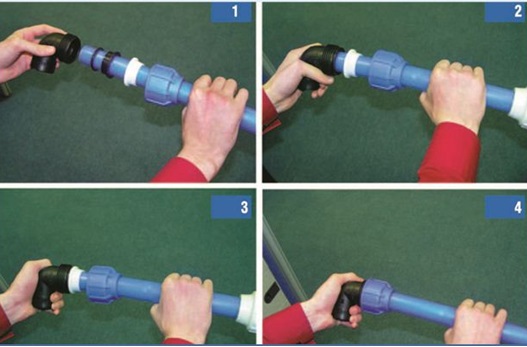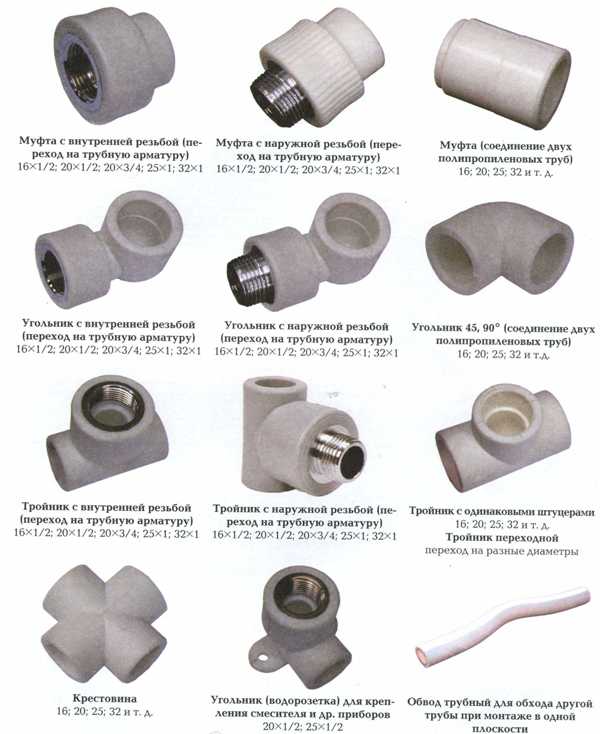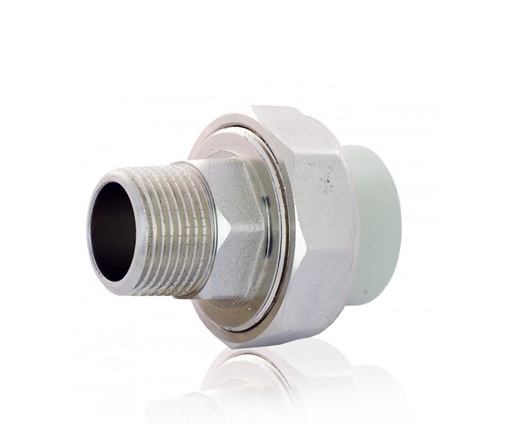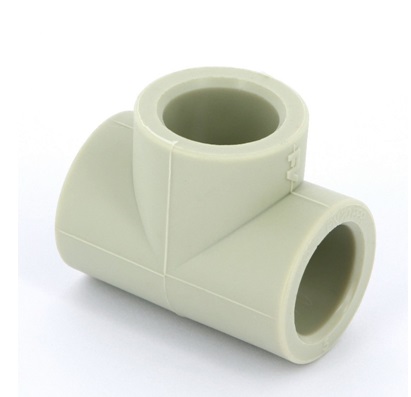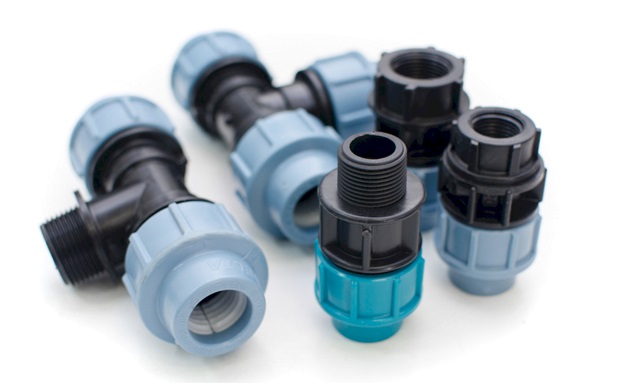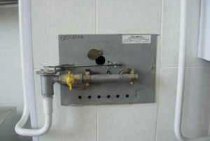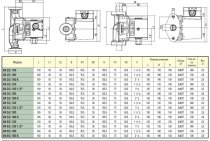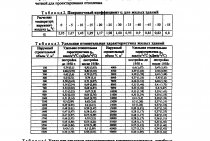Purpose and types of corner fittings
The purpose of the corner (swivel) fittings is to change the direction of the line. Swivel fittings are produced with an angle of 15, 30, 45, 60, 90 degrees.
Swivel fittings can be divided into groups according to the method of connection with the pipe, according to the design features, according to the material.
According to the method of connection, they distinguish:
- threaded;
- crimp;
- collet;
- welded.
Swivel fittings with a threaded connection are used to create detachable sections of the pipeline. Such parts can be used repeatedly, they are easy to install. In the absence of threads on the pipe, it is easy to cut it on the spot.
Threaded connections have one drawback - they weaken over time. To enhance the tightness of the joint, linen or synthetic winding is used.
A more reliable threaded connection is an elbow fitting with a compression nut. An additional clamping ring is used here, which is fixed with a nut. For a detachable joint of a pipeline, when it is impossible to rotate a pipe or fitting, corners with an American nut are used, which are wound over the threads of the pipe and the corner, connecting the ends according to the coupling principle.
Push-in swivel fittings combine the reliability of a press fitting with the mobility of a thread. A feature here is a crimp ring with special teeth, which is fixed with a union nut on the thread.
Push-in elbow fitting
Welded swivel fittings for steel pipes are a piece of pipe bent at the desired angle, which is welded (by electric or gas welding) into the place where the pipeline turns. For copper communications, soldering is not used, but welding. Corners for a copper pipeline are produced from copper or bronze. Plastic corners are connected to pipes by cold or diffusion welding.
By design, swivel fittings are divided into:
- simple corners;
- corners with a locking element.
A simple angle fitting is a metal or plastic body that is bent to a specific angle. Along the edges of the body, the part has a device for attaching to the pipe.
Corners with a locking element have a locking element in the body. As a rule, this is a ball mechanism. A swivel fitting with a valve is used to cut off part of the pipeline from the main line.
According to the material are distinguished:
- steel;
- brass;
- cast iron;
- plastic.
The body of the elbow fitting can be made of different materials, depending on which pipeline it will be installed on. On metal lines, you can install a cast-iron, steel or brass corner. On plastic pipes, corners are used depending on the type of polymer - polypropylene, brass, combined.
Fitting installation diagram
A detailed installation diagram for polypropylene fittings depends on the type of connecting element.
Weld Fitting Installation
Installation of a connecting element for pipes by welding is carried out in the following sequence:
- the pipe is cut using a special pipe cutter or scissors (hacksaw) in accordance with the dimensions established by the pipeline diagram;
- the end of the pipe to be connected to the fitting is deburred;
- the area that needs to be warmed up is marked. As a rule, this area corresponds to the depth of the docking connector;
- a prepared pipe section and fitting are inserted into the heated welding machine. The duration of heating of the connected elements depends on such parameters as the diameter of the pipe and the depth of the weld;
Determination of the period of heating and cooling of the weld
- heated elements are connected.In this case, distortions and deformations should be avoided, since they affect the quality of the weld and, accordingly, the tightness of the joint;
- the finished joint is held in a predetermined position until cooling. The cooling period is also indicated in the table in the photo from point 4.
Weld Fitting Installation Process
The installation technology of welded fittings is presented in the video.
Installation of compression fittings
The compression fitting consists of the following elements:
- clamping nut;
- clamping ring;
- corps;
- sealing rings.
Basic elements of a compression fitting
To make a connection with a compression fitting, you must:
- prepare the pipe for installation of the fitting: cut in accordance with the size specified by the diagram, clean from burrs and other irregularities, chamfer;
- put on the pipe in the specified sequence the clamping nut, clamping ring, compression ring and sealing ring;
- insert the fitting body, inside which install all the rings;
- tighten the connecting element with a clamping ring. At the first stage, tightening is done by hand and only if necessary with a wrench.
Compression fitting installation sequence
After mounting any type of connecting fitting, it is necessary to check the strength and tightness of the resulting connection. To do this, the pipeline is filled with water. If a welded fitting leak is detected, then the connecting element is reinstalled. If a compression fitting is leaking in the first step, you can tighten the nut and check the tightness again.
Selection criteria for fittings for polypropylene pipes
When choosing fittings for connecting pipes made of polypropylene, the following parameters must be considered:
- fitting type;
- installation method;
- sizes. The fundamental dimension is the diameter of the connecting element, which must correspond to the diameter of the pipes to be connected.
Varieties of polypropylene fittings
Polypropylene fittings for heating or water supply are selected depending on the purpose. Currently, the following types of connecting elements are distinguished:
- clutch. The fitting is used for mounting pipes of the same diameter horizontally, extending the pipeline;
- adapters are used for joining pipes of different diameters;
- corners are used to change the direction of the pipeline system;
- tees are required for connection to the central line of branches;
- crosses are required to connect two branches at the same time, and in different directions;
- bypasses are installed when it is necessary to lay pipes in the same plane, but at different levels;
- collectors are used in the heating system and the underfloor heating system to connect the pipeline to the source;
- plugs used to temporarily or permanently cut off a separate part of the pipeline;
- compensators, with the help of which the effect of expansion of pipes under the influence of high temperature is smoothed out.
Types of pipe fittings depending on the purpose
The selection of the type of fitting is carried out in accordance with the previously developed scheme of the pipeline system.
To connect polypropylene pipes with metal components of the pipeline system, such as valves, a special fitting is used, which is called an American.
On the one hand, the American woman provides for the possibility of welding a fitting to polypropylene pipes, and on the other hand, a threaded connection with metal or metal fittings, valves, and so on is equipped.
Connector for polypropylene pipes and threaded fittings
Types of fittings depending on the installation method
Installation of pipelines from polypropylene pipes can be carried out using:
welded fittings.To install a welded fitting, you must have special equipment and certain skills to work with it. The resulting connection is stronger and tighter;
Welded connector
compression fittings. The choice of compression type fittings is determined by the ease of installation. No special equipment is required to perform the job. The resulting connection is strong enough, but the level of tightness is lower than when using welded ones. Another advantage of compression fittings is the ability to assemble the pipeline even at low temperatures.
Connecting elements installed without welding
Heating and water supply systems, for the manufacture of which polypropylene pipes are used, are advantageously assembled using welded fittings, since this method allows to achieve a higher level of sealing of the pipeline.
How to choose a product model
For some pneumatic systems, the problem of choosing pneumatic fittings is not worth it, since all parameters are rigidly defined from the outset. This is typical, for example, for the assembly of medical units, instruments, systems. Here it is required to purchase only high-quality pneumatic fittings that correspond to the material and characteristics of the equipment.
Similar requirements are established for chemical industries or for systems that operate at high pressure, extreme temperatures, and the risk of water hammer.
When choosing pneumatic fittings for systems without stringent requirements, several parameters are taken into account:
- The place of operation of the connection is the street, the room, climatic features, the degree of heating of the premises.
- Internal environment - operating and peak pressure in the system, temperature extremes.
- Manufacturer's recommendations, international criteria for pneumatic equipment and pneumatic fittings.
- Connection type - stationary, collapsible.
- Operating conditions of equipment - permanent, mobile.
- Required configuration or purpose of the connector node.
- Domestic or industrial use.
For inexpensive household equipment, where there are no peak loads, and the unit is dismantled up to several times a day, it is enough to choose mid-range pneumatic fittings from well-known manufacturers. This choice will provide the best value for money.
Features of Angle Fittings
The simplest corner of the classic look and material is a cast-iron part with an internal thread with an angle of rotation of 900. It is these fittings that builders used in the recent past. Today, when demands have changed, plastic pipes and new communications installation technologies have appeared, corner fittings have become more complicated. With their help, now they connect not only water supply, heating or gas pipelines, but also pneumatic systems operated at high pressure.
Features of using corner fittings:
- the section of the pipeline connected by a fitting is not inferior in strength and durability to a solid pipe;
- corner fitting helps to maintain the throughput of the highway at the turn;
- the corner allows you to make the pipeline collapsible.
It would seem that a butt joint cannot be as reliable as a solid pipe, and therefore, to create a flawless pipeline, it is better to bend the pipe in the right direction with a pipe bender - so there are less costs, and there will be no potential leakage.
However, in practice, it is not easy to use a pipe bender when installing communications in a building, but somewhere it is impossible. The fact is that a manual (mobile) pipe bender can only be used on pipes of small diameter, and it is impossible to carry out installation with solid pipes in a limited space. A bent pipe is used in the installation of industrial highways, when laying external communications.
To increase the reliability of the fitting connection, corners with non-separable fixation are used - welded or press fitting. The threaded connection is reinforced with a sealant.
The second point between choosing a bent pipe or using an elbow fitting is maintaining the capacity of the line at the turn. The pipe, even bent on a professional pipe bender, is deformed at a break, flattened. Its internal lumen narrows, the throughput drops. The use of an angle fitting helps to avoid this moment.
Features of Pneumatic Fittings
Pneumatic systems are systems that operate on the energy of compressed air or other gas, which is much less common.
Pneumatic tools, aggregates, systems are mainly the area of industrial use. Here, pneumatic fittings are in demand for the assembly of equipment that is operated in aggressive environments, at elevated temperatures, at high pressures.
Pneumatic-based household tools are pneumatic guns (for nails, staples), screwdrivers, drills, pumps, spray guns.
The operational requirements and loads are lower than in the industry, but the requirements for the quality of connections are no less stringent. The slightest leak at the junction of the pneumatic system leads to its failure to work.
Pneumatic (or air) fittings have increased strength in comparison, for example, with plumbing fittings. They are subject to special requirements for the material of manufacture and the reliability of the connection.
What are sewer pipes
Sewer pipes for use are divided into 2 types:
- for internal wiring;
- for outdoor assembly.
According to the material of manufacture:
- cast iron;
- plastic.
Cast iron sewer pipes and fittings to them are produced both for internal wiring and for installation of external lines. Cast iron products are characterized by high strength, long service life.
At the same time, the high cost of materials, the roughness of the inner surface, and the large specific gravity of cast iron are disadvantages of parts of this type.
Types of sewer pipes
Plastic products are increasingly taking a leading position in this direction. Plastic pipes and fittings are made from different materials:
- polyvinyl chloride (PVC);
- polypropylene (PP);
- polyethylene (PET).
PVC sewer pipes are pressure and non-pressure. The first are produced with a thickened wall, stiffeners that increase strength. Such pipes work with pressure drops. Coloring is orange.
Non-pressure pipes are installed in free-flowing lines, and are also used in internal wiring.
Corrugated - used when changing the direction of the line without the use of fittings. Inside - a smooth surface, outside - stiffeners that protect against destruction under increased dynamic loads.
Polypropylene (PP) - characterized by high strength, the ability to withstand temperatures up to 100 ° C, resistance to household chemical solutions. They are installed in any premises, they are recommended to be mounted in order to receive drains from dishwashers and washing machines.
Reinforced with a corrugated layer, they are used in the assembly of external trunk lines. They are interconnected with couplings.
Polyethylene (PET) - double corrugated pipes are used when installing lines outside the premises. The margin of safety allows them to be mounted to a depth of 10-15 m. The cross-section range is from 63 to 1200 mm.
